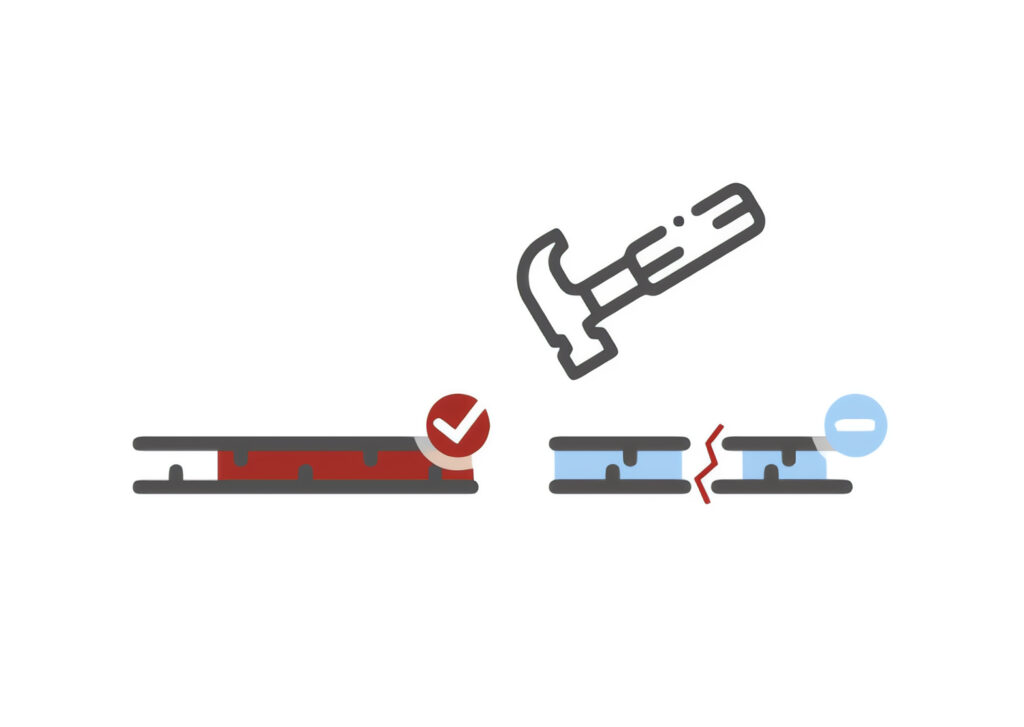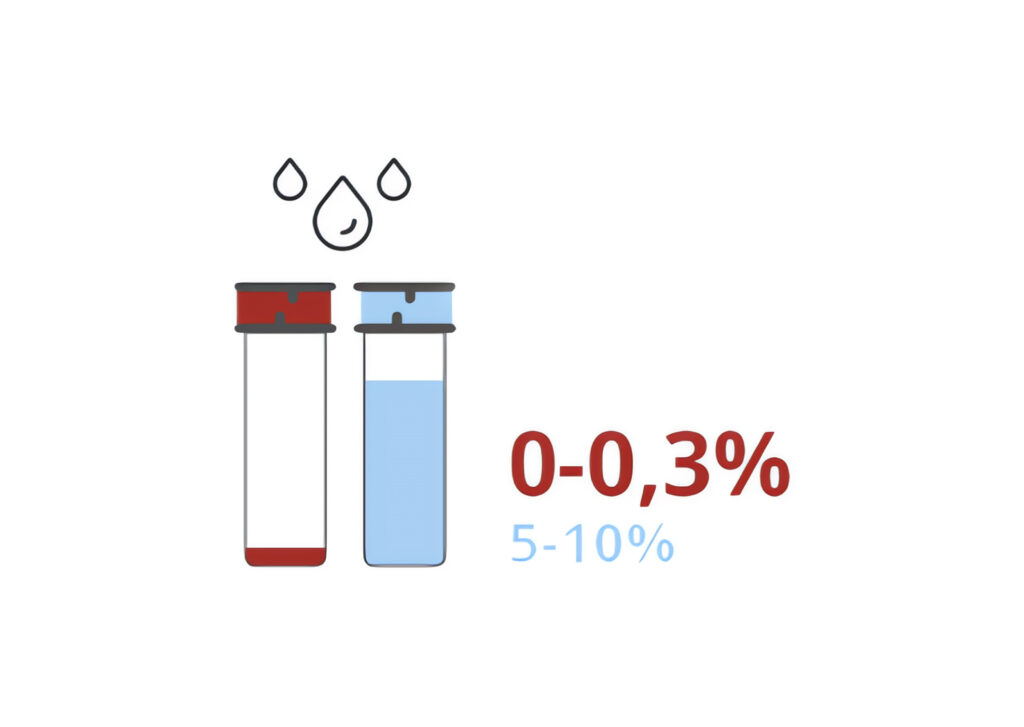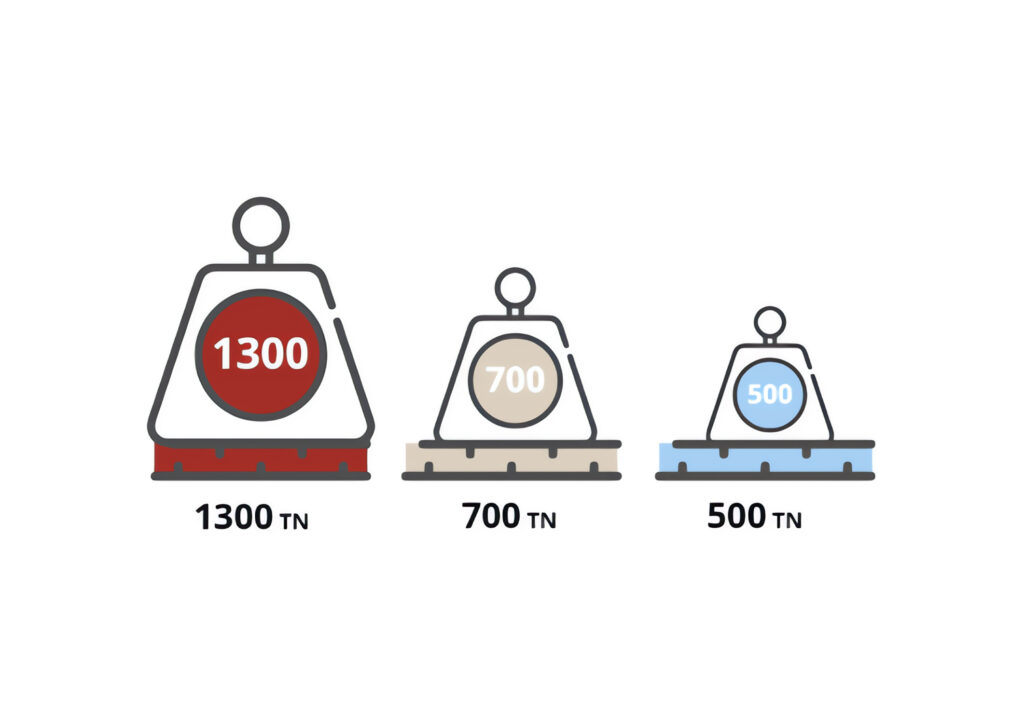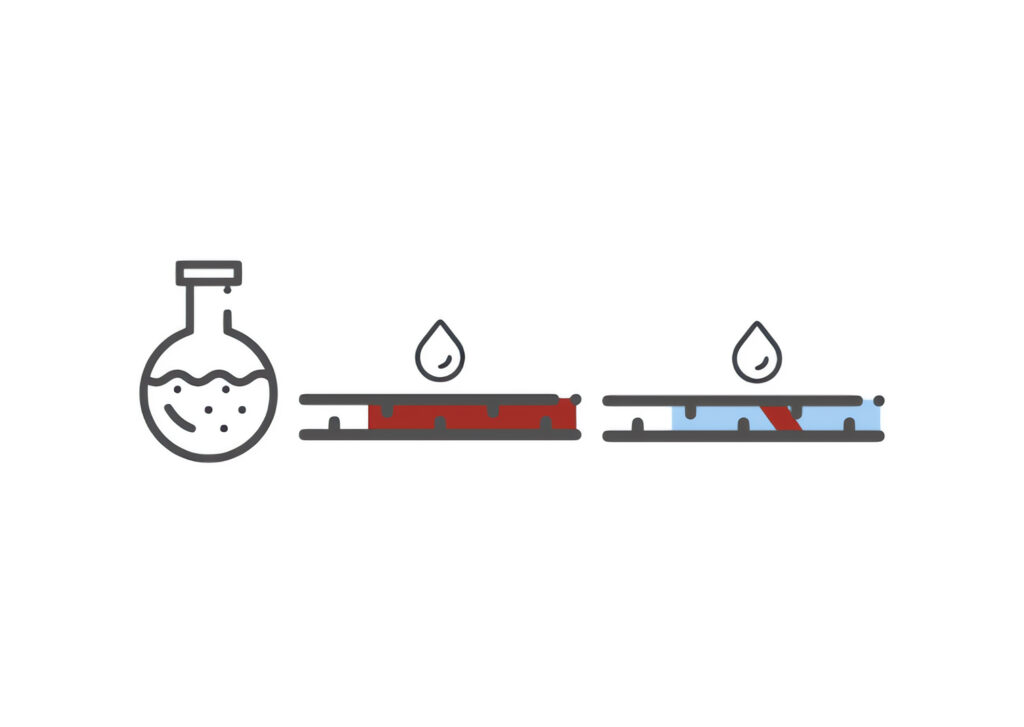Polymer Concrete
Polymer concrete is a premium material crafted from carefully chosen aggregates, ensuring top-notch quality.
The ideal blend, secured with polymeric resins, undergoes stringent quality checks, leading to a strength four times greater than that of traditional concrete. As a result, a significant reduction in the dimensions of the prefabricated material is achieved, enabling the production of compact, lightweight components.
- Polymer Concrete
- Fibre-Reinforced Concrete
- Traditional Concrete

Shock Resistance
As it is a composite material, it guarantees the perfect conservation of surfaces against usage or the passing of time. No perception of wear!

Zero Water Absorption
It has practically 0% water absorption and guarantees the sealing of the pieces. Impermeable!

Compressive Strength
When employed in prefabricated systems, it can withstand pressures of up to 1300 kp/cm2, a notable contrast to the 700 kp/cm2 upheld by fiber cement or the 500 kp/cm2 typical of traditional concrete, all before exhibiting any signs of breaking or cracking.

Flexural Strength
Applied to prefabricated systems, it can support up to 18-25 MPa compared to the 15-20 supported by fibre cement or the 1-5 MPa2 supported by traditional concrete. Before breaking or cracking!

Resistance Control
Polymer concrete is exceptionally resistant to chemical substances, with its components remaining unresponsive to contact, thus preventing any disintegration or deformation. Its exceptional abrasion resistance has been thoroughly verified.

Unalterable in Freeze/Thaw Cycles
On the contrary to traditional materials it is not affected by freeze-thaw cycles and prevents the appearance of fissures or cracks. It maintains all properties intact!

Light
Thanks to its excellent mechanical properties, it allows pieces with a finer profile and smaller dimensions to be made.

Abrasion Resistance
The hardness of the silica aggregates ensures excellent surface preservation in areas exposed to road traffic.
- Polymer Concrete
- Fibre-Reinforced Concrete
- Traditional Concrete
The ideal blend, secured with polymeric resins
undergoes stringent quality checks, leading to a strength four times greater than that of traditional concrete. As a result, a significant reduction in the dimensions of the prefabricated material is achivied, enabling the production of compact, lightweight components.